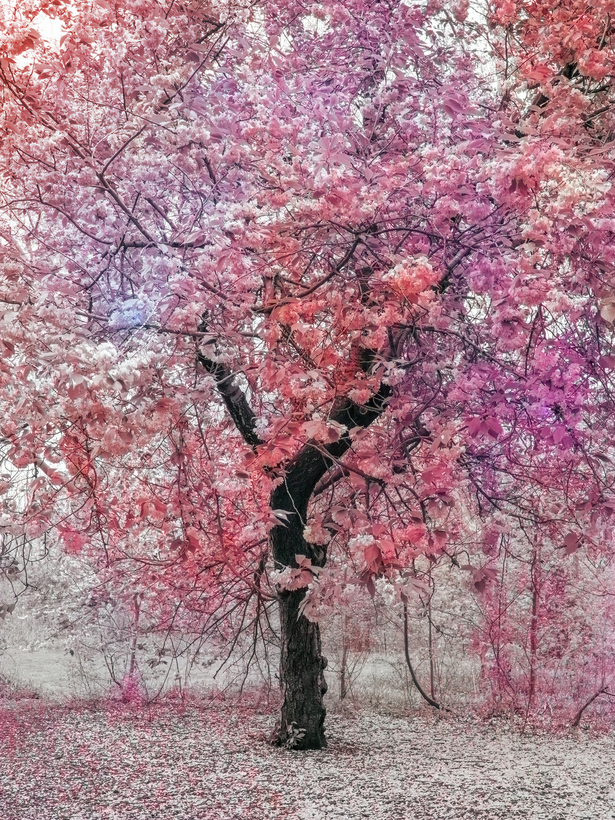The California-based artist Trevor Paglen is known for photographing U.S.-government black sites in the Nevada desert, spy satellites in the night skies, and underwater cables that power the World Wide Web. He has described his approach as “visualizing modes of control and turning them into artworks.” So why the sudden swerve into flower photography? Paglen’s latest solo exhibition, at Pace in London, is aptly titled “Bloom.” It features several large-scale photographs of flower formations, a nod to the work of Baroque still-life painters of the 17th century.
“Ten years ago, if you’d told me I’d be making a show that had a bunch of flowers in it, I’d have said that you were out of your mind,” the 46-year-old artist, whose work is also the subject of solo exhibitions at the Carnegie Museum of Art (until March 14) and the OGR Turin (October 10 to January 10), told me on the telephone. But the “Bloom” pictures begin to make more sense on closer inspection. The colors seem a little bit off, almost too resplendently flower-like. That’s because Paglen imported his photographs into artificial-intelligence software, which attributed colors by isolating different objects or patterns within the pictures.
“I have always been interested in taking images that are familiar and then making them seem strange,” Paglen says, “as a way of trying to show how the meaning of those images can change over time.” The flower images do this by resembling tangled networks of snaking computer cables. “For me these images are not so much of flowers but of blooms,” he continues. “I wanted them to feel kind of wild and a little bit unsettling.” Their arbitrary colorings find a more sinister corollary at Pace, in an interactive artwork that Paglen continues to evolve called ImageNet Roulette. Its machine-learning functions, developed to access data and learn how to apply it, are aligned with the world’s most widely used data set, ImageNet, a program developed by Princeton and Stanford in 2009, which teaches artificial-intelligence systems how to classify human profiles. Those who visit the show can have their image recorded by a camera that categorizes them according to the data set and is then projected onto a gallery wall.
“ImageNet Roulette is intended to show how pseudo-scientific classifications can quickly turn into a kind of Fascism,” Paglen explains. He worries that the reliance on artificial intelligence and computer-vision surveillance—on the increase during the current pandemic—will inevitably curtail civil liberties. “When we think about the history of social and progressive movements, they are very often ones where huge amounts of people were engaging in illegal activities,” Paglen says. “Their success required a degree of inefficiency on the part of policing and on the part of surveillance mechanisms, so in a strange way it can be helpful to think about inefficiency as a kind of public resource.” —Tobias Grey


 Discover
Discover